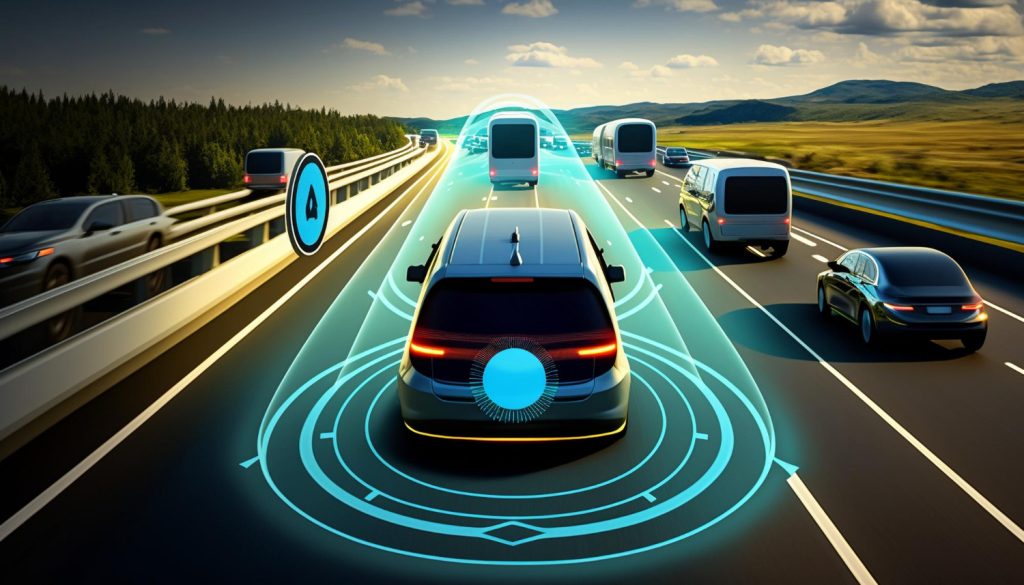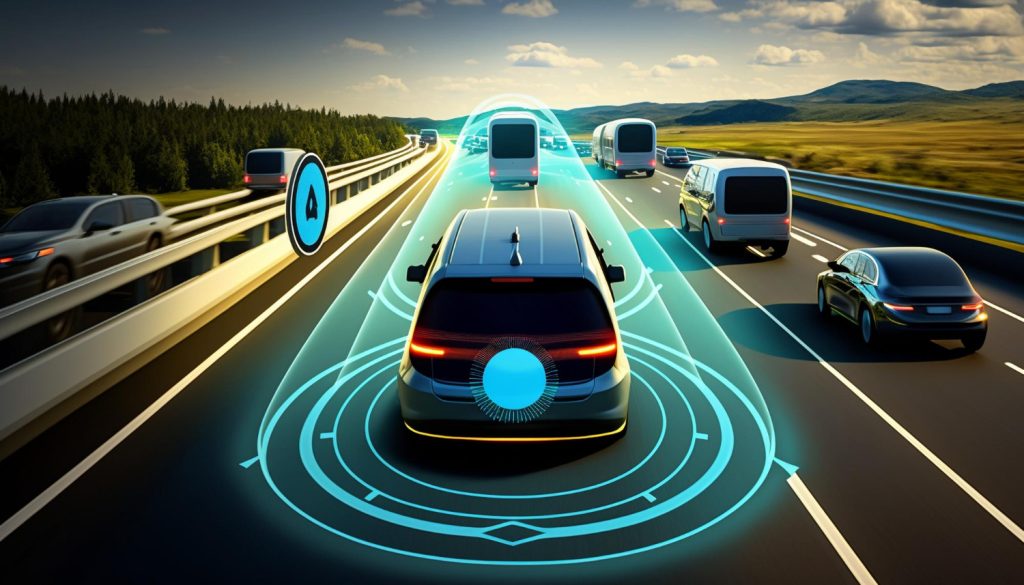Autonomous vehicles (AVs), also known as self-driving cars, are poised to revolutionize the transportation industry. These vehicles promise to enhance safety, reduce traffic congestion, and provide greater mobility for individuals who are unable to drive. However, the widespread adoption of AVs will also have a significant impact on various industries, including auto insurance. This article explores the potential effects of AVs on auto insurance, examining the changes in risk assessment, liability, premiums, and the overall insurance landscape.
Introduction to Autonomous Vehicles
Autonomous vehicles use a combination of sensors, cameras, radar, and artificial intelligence (AI) to navigate and operate without human intervention. Companies like Tesla, Waymo, and Uber have been at the forefront of developing AV technology, with several models already being tested on public roads. The Society of Automotive Engineers (SAE) defines six levels of driving automation, from Level 0 (no automation) to Level 5 (full automation). As vehicles progress towards higher levels of automation, the implications for auto insurance become more pronounced.
Changes in Risk Assessment
Traditional auto insurance relies heavily on human error as a significant factor in determining risk. Human drivers are prone to mistakes, distractions, and impaired judgment, leading to accidents and insurance claims. With the advent of AVs, the risk landscape is expected to shift dramatically. Autonomous vehicles are designed to follow traffic laws, avoid collisions, and make split-second decisions based on vast amounts of data, potentially reducing the frequency and severity of accidents.

Reduced Accident Rates
Studies have shown that human error is responsible for approximately 94% of all traffic accidents. By eliminating the human factor, AVs have the potential to significantly reduce accident rates. This reduction in accidents would, in turn, lead to fewer insurance claims and lower costs for insurers. However, this also means that insurers will need to adjust their risk models to account for the improved safety records of AVs.
New Types of Risks
While AVs promise to reduce traditional driving risks, they also introduce new types of risks. For instance, the reliance on software and technology opens the door to cyber threats and hacking. Insurers will need to develop new policies and coverage options to address these emerging risks. Additionally, the transition period, where both human-driven and autonomous vehicles share the road, may present unique challenges and risks that need to be managed.
Shifts in Liability
One of the most significant changes AVs will bring to the auto insurance industry is the shift in liability. Traditionally, liability in auto accidents is assigned to the driver at fault. With AVs, the question of liability becomes more complex, as the “driver” is now a sophisticated AI system.
Manufacturer Liability
In cases where an autonomous vehicle is involved in an accident, the liability may shift from the driver to the vehicle manufacturer or the software developer. This shift in liability will require insurers to reassess their policies and potentially create new products to cover manufacturers’ liabilities. Legal frameworks will also need to evolve to address these changes and establish clear guidelines for determining fault in AV-related incidents.
Shared Liability Models
Another potential outcome is the development of shared liability models. In this scenario, liability may be distributed among various parties, including the vehicle owner, the manufacturer, the software developer, and even the entity responsible for maintaining the road infrastructure. Insurers will need to navigate these complex liability arrangements and determine how to apportion coverage and premiums accordingly.
Impact on Premiums
The introduction of AVs is expected to have a profound impact on auto insurance premiums. As the frequency and severity of accidents decrease, insurers may experience a reduction in claims payouts. However, the cost of repairing AVs, which are equipped with advanced technology and sensors, may be higher than that of traditional vehicles.
Premium Reduction for Consumers
For consumers, the improved safety of AVs could lead to lower insurance premiums. Insurers may offer discounts for vehicles equipped with advanced driver-assistance systems (ADAS) and full automation features. Additionally, the ability of AVs to collect and transmit data in real-time could enable insurers to implement usage-based insurance (UBI) models, where premiums are based on actual driving behavior and vehicle usage.
Increased Costs for Manufacturers
While consumers may benefit from lower premiums, manufacturers of AVs could face increased insurance costs. The shift in liability and the need to cover potential software and hardware failures may lead to higher premiums for manufacturers. These costs could be passed on to consumers in the form of higher vehicle prices, potentially offsetting some of the savings on insurance premiums.
Evolution of Insurance Products
As the auto insurance industry adapts to the rise of AVs, new insurance products and services are likely to emerge. Insurers will need to innovate and develop policies that address the unique risks and liabilities associated with AVs.
Cyber Insurance
With the increased reliance on software and connectivity, cyber insurance will become a critical component of auto insurance for AVs. Policies will need to cover potential cyberattacks, data breaches, and software malfunctions that could compromise the safety and operation of autonomous vehicles.
Product Liability Insurance
Manufacturers of AVs will require comprehensive product liability insurance to cover potential defects and failures in their vehicles and software. This type of insurance will protect manufacturers from financial losses resulting from lawsuits and claims related to accidents caused by their products.
Usage-Based Insurance
The ability of AVs to collect and transmit data opens the door for usage-based insurance models. Insurers can leverage data on driving behavior, vehicle usage, and performance to offer personalized premiums based on actual risk. This approach can lead to more accurate pricing and incentivize safer driving practices.
Regulatory and Legal Considerations
The widespread adoption of AVs will necessitate changes in regulatory and legal frameworks. Governments and regulatory bodies will need to establish clear guidelines and standards for the operation, testing, and insurance of autonomous vehicles.
Standardized Regulations
To ensure the safe deployment of AVs, standardized regulations will be essential. These regulations should address issues such as vehicle testing, data privacy, cybersecurity, and liability. Consistent regulations across jurisdictions will facilitate the development of insurance products and provide clarity for consumers, manufacturers, and insurers.
Legal Precedents
As AV-related incidents occur, legal precedents will play a crucial role in shaping the future of auto insurance. Court rulings on liability, fault, and compensation will help establish a framework for handling AV-related claims and disputes. Insurers and legal professionals will need to closely monitor these developments and adjust their policies and strategies accordingly.
The Future of Auto Insurance
The transition to a world dominated by autonomous vehicles will be gradual, with human-driven and autonomous vehicles coexisting on the roads for the foreseeable future. During this transition period, insurers will need to balance traditional risk models with emerging AV-related risks. Collaboration between insurers, manufacturers, regulators, and technology developers will be essential to navigate this complex landscape and ensure a smooth transition.
Conclusion
The impact of autonomous vehicles on auto insurance is multifaceted and profound. As AV technology advances and becomes more widespread, the auto insurance industry will need to adapt to new risk paradigms, shifts in liability, and evolving regulatory landscapes. While the promise of reduced accident rates and lower premiums is enticing, insurers must also address emerging risks and develop innovative products to meet the needs of a changing market. The future of auto insurance in the age of autonomous vehicles is both challenging and full of opportunities, requiring a proactive and collaborative approach to ensure safety, affordability, and sustainability.
